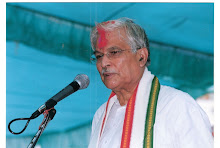Dr. Kaushik had asked me about a reference on practicing of vaccination in India prior to its discovery by Dr. Jenner in 1796. While speaking in a Conference in 1998 I had quoted the following material as published in the 'Indian Science and Technology in the Eighteenth Century' by Dr. Dharampal, Impex India, Delhi, 1971, pp. 141-42.
Here follows one account of the operation of inoculation of the smallpox as performed here in Bengal taken from the concurring accounts of several B(r)hamans and physician of this part of India.
The operation of inoculation called by the natives tikah has been known in the kingdom of Bengall as near as I can learn, about 150 years and according to the Bhamanian records was first performed by one Dununtary a physician of Champanagar, a small town by the side of the Ganges about half way to Cossimbazar whose memory is now holden in great esteem as being thought the author of this operation, which secret, say they, he had immediately of God in a dream.
Their method of performing this operation is by taking a little of the pus (when the smallpox are come to maturity and are of a good kind) and dipping these in the point of a pretty large sharp needle. Therewith make several punctures in the hollow under the deltoid[2] muscle or sometimes in the forehead, after which they cover the part with a little paste made of boiled rice.
When they want the operation of the inoculated matter to be quick they give the patient a small bolus made of a little of the pus, and boiled rice immediately after the operation which is repeated the two following days at noon.
The place where the puncture were made commonly features and comes to small suppuration, and if not the operation has no effect and the person is still liable to have the smallpox but on the contrary if the punctures do suppurate and no feaver or eruption insues, then they are no longer subject to the injection.
The punctures blacken and dry up with the other pustules.
The feaver insues later or sooner, according to the age and strength of the person inoculated, but commonly the third or fourth days. They keep the patient under the coolest regimen they can think off before the feaver comes on the frequently use cold bathing.
If the eruption is suppressed they also use frequent cold bathing. At the same time they give warm medicine inwardly, but if they prove of the confluent kind, they use no cold bathing, but [keep] the patient very cooll and given cooling medicine.
I cannot say any thing of the success of this operation or of their method of cure in this disease, but I intend to inform myself perfectly when the time of this distemper returns which is in April and May.
[1] From Ro. Coult to Dr. Oliver Coult in 'An account of the disease of Bengall', (dated, Calcutta, February 10, 1731.)
[2] The other reading of this word from the original might possibly be 'delloid' : Editor.

No comments:
Post a Comment